How to Use a Trail Camera for Security (7 Helpful Tips)
Last Updated on
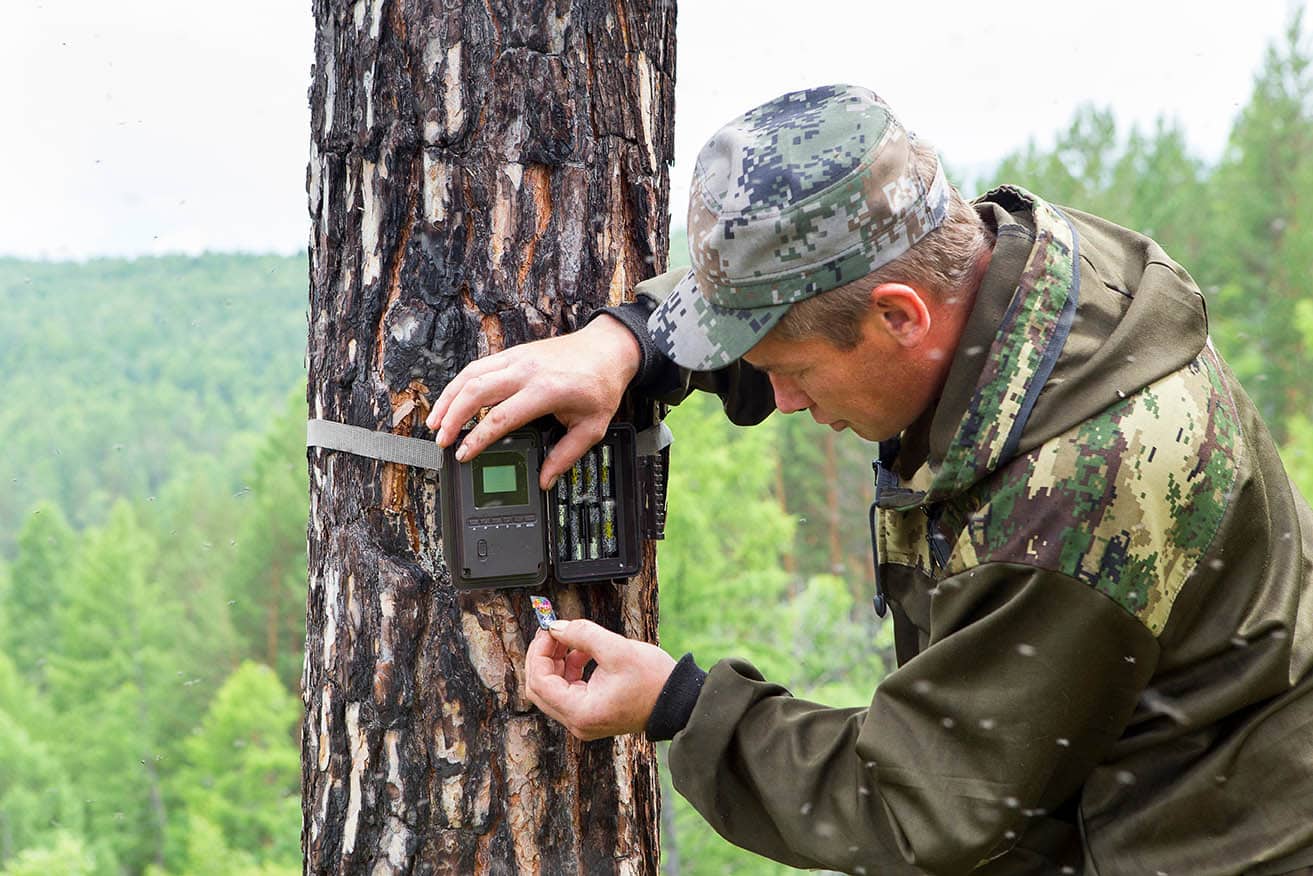
When it comes to trail cameras, many people don’t think about the different uses it has other than watching game or capturing nature. There is actually a very good use for them and it will help keep your home safe, too. Security cameras are a great way for trail cameras to have another use.
Just why not buy a security camera then? Well, the truth is you could. You could easily just get one, but what if you don’t have the budget for one? Those things can rack up a price that is not easily obtainable for many people. So why should they have to worry about their home or property just because they can’t afford the fancy security system?
This is where using one or more cameras can really help you out and save you thousands of dollars over time.

1. Use No Glow Cameras

No glow trail cameras are one way you can keep the trespassers from noticing the camera. These types of cameras use infrared to capture pictures in the dark. Which is going to keep anyone from noticing them if they aren’t meant to be there.
This doesn’t just work at night, though. They even work during the day, so on days that are overcast or storming the camera still won’t give itself away.
2. Video Capture
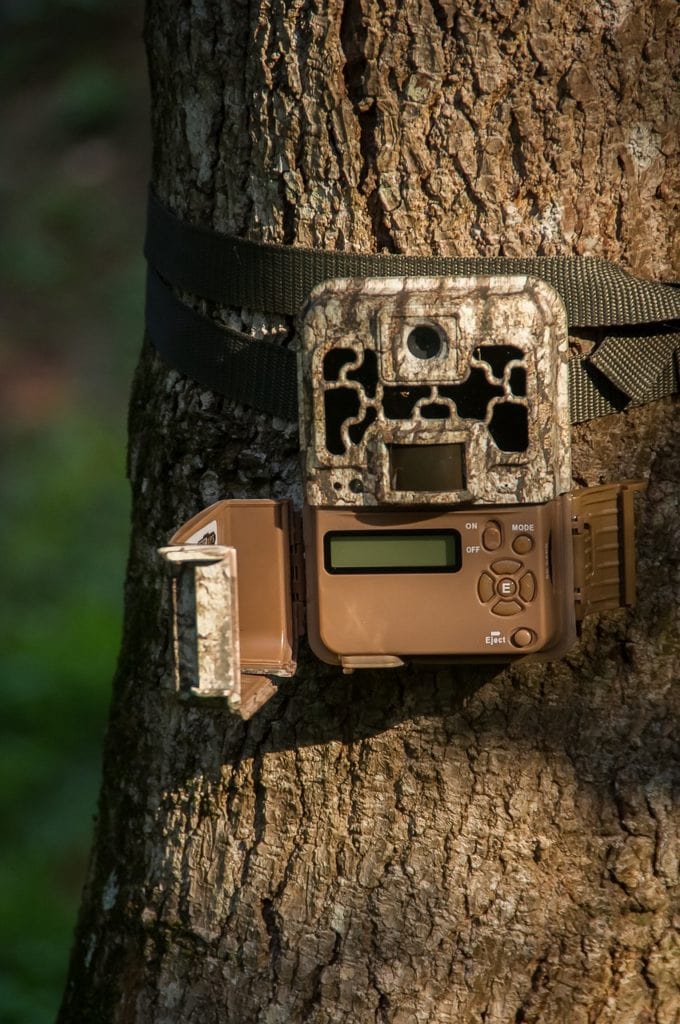
Not every trail camera is going to have a video capture feature. What you need to do is look at the cameras before purchasing to make sure you have this feature. Typically, it is on the box or in the product deception depending on the location of purchase.
You will have to check if your video is going to be filmed in HD or not. If it has the capability of filming in HD, make sure you have that set. This will prevent the grainy video that can happen at night. You will also want to make sure that you have enough space on your SD card, which means you may have to get the larger SD memory option. As many cameras can have up to 90 seconds of film time.
3. Check the Motion Sensors
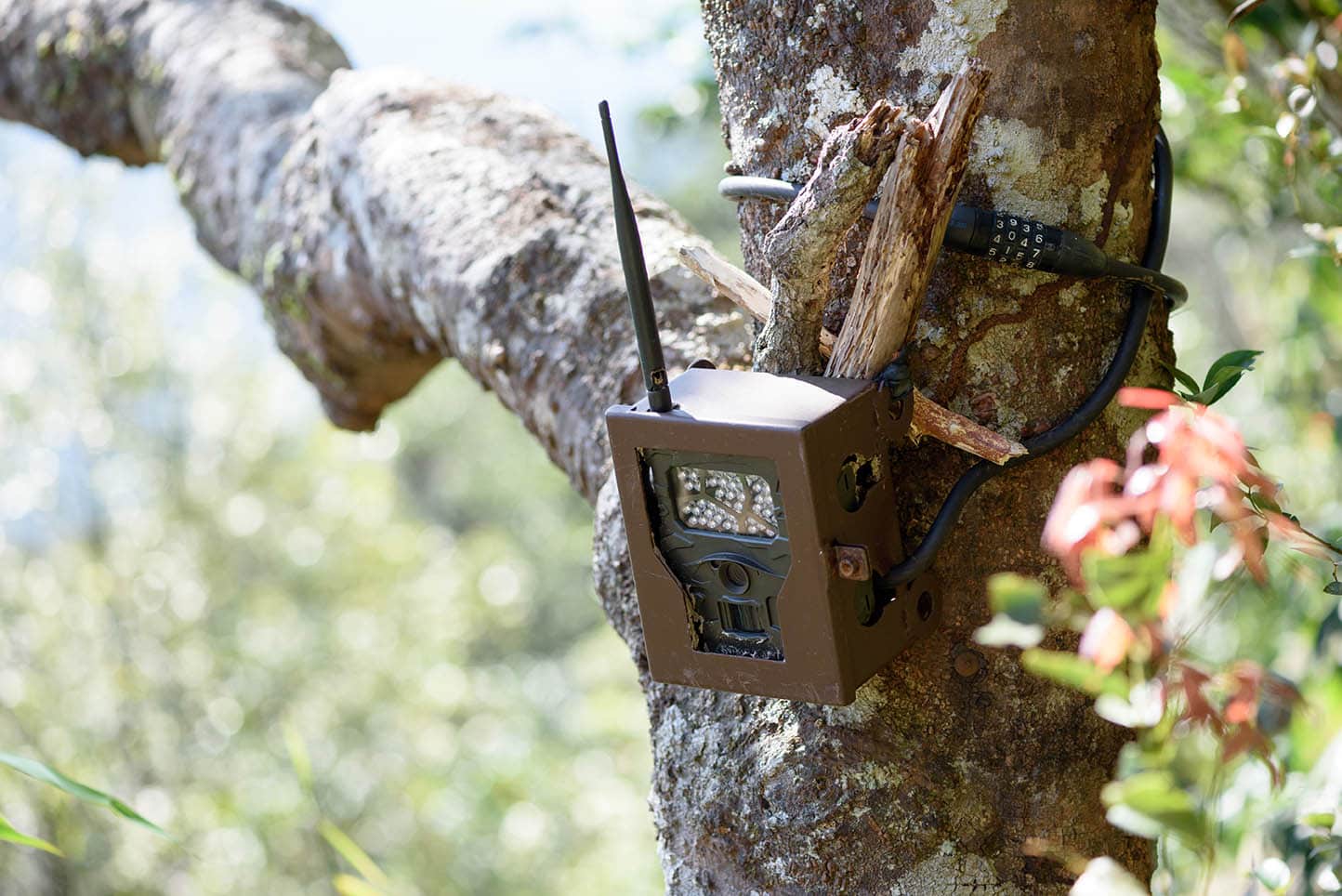
Now, every trail camera is going to come with a motion sensor. However, not all motion sensors are created equal. Most cameras will be equipped with Passive Infrared (PIR), but night time motion detection will use regular infrared flash (IR). You are going to want to check the range of the motion sensors to see how far they reach.
If you have a bigger property, this may mean you need more than one camera set up. The information should tell you how far the camera can see. The closer someone is, the better the image quality will be as you won’t have to zoom in later on.
4. Time Stamps
Timestamps are an underrated tool when it comes to security. Knowing exactly when and what time someone came onto your property can settle worries. Not every camera is going to have this ability, though. You will have to do some research into which ones do if you want this feature.
Knowing when someone is coming can also help if you get law enforcement involved. It gives them an idea of when to look out for whoever is trespassing and when to expect them again.
5. Time-Lapse Feature
This feature can easily replace the video feature. This setting on your camera is going to allow you to take either video or photos. What it does is take a spurt of images in a specific time frame. You can set this up however you like in your settings. As an example, if you set your camera up to take images every 2 minutes for 90 seconds, you’d get bursts of images for those 90 seconds every 2 minutes.
This setting can help you save space on your SD card if you don’t want it taking pictures consistently or video consistently.
- Related read: How to Program a Trail Camera (Easy Beginner’s Guide)
6. Camouflage and View
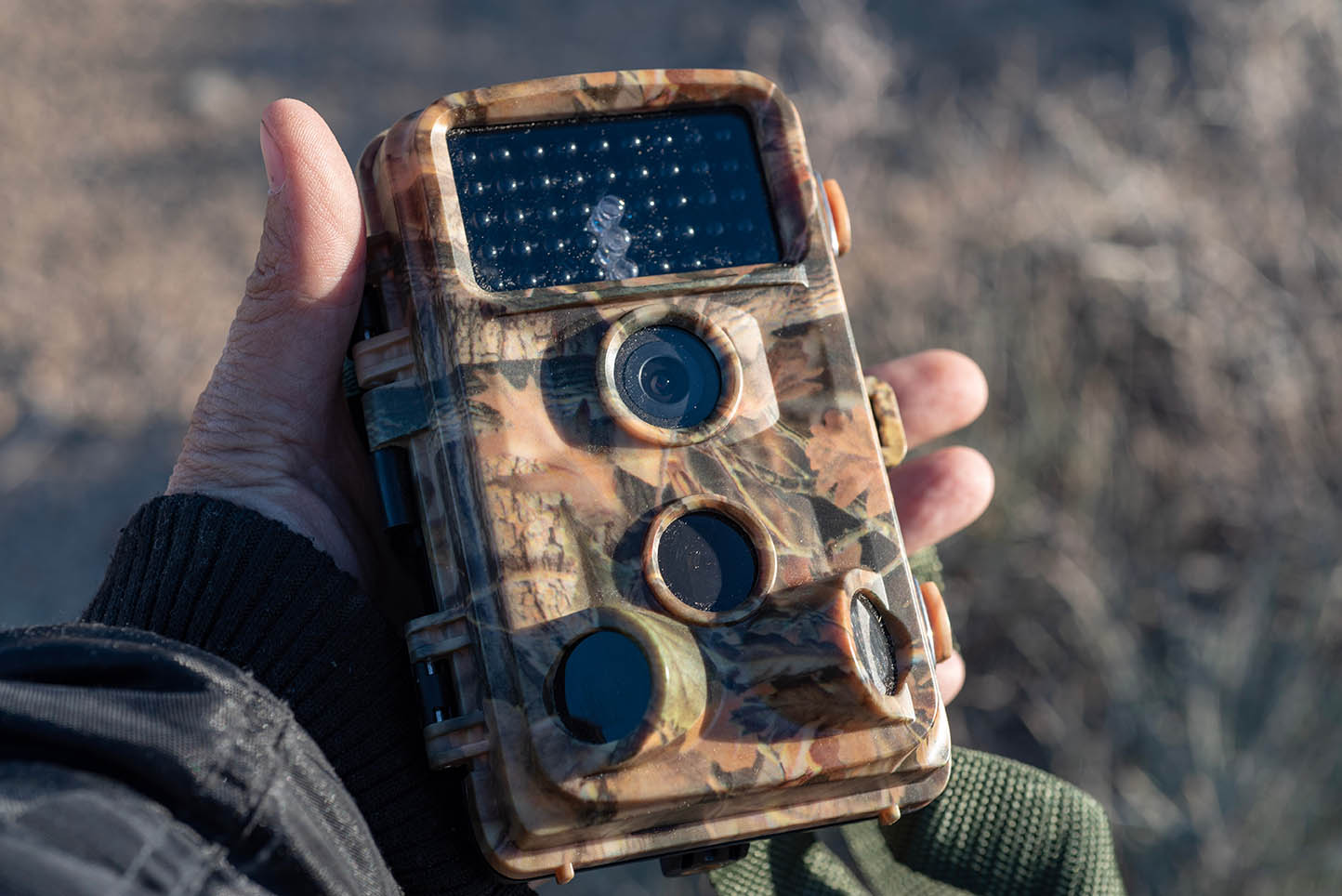
When you first set up your trail camera, check not only the view but the camouflage. As most cameras are going to be a shade of green, brown, or have the pattern of leaves, it can make this a little more difficult.
So, first, find where you want to put your camera. If this is by your door, you may want to consider getting a fake plant if you don’t have a tree nearby. If you do have a tree, then put it there but make sure it faces your door. As you do not want anything to obstruct your view, you are going to want to test this out.
Once you have your place, you can think about how to camouflage it. What you want is to make it blend in as much as possible. Fake plants can work at the door while blending it in with bushes also works. If you place it high enough, one may not notice it if looks like a light. You’ll have to get a little creative to make a trail camera blend in, but it is doable. Unlike, the sleek modern security cameras that are made to blend into a house, your trail camera is bigger.
7. Wireless Communication
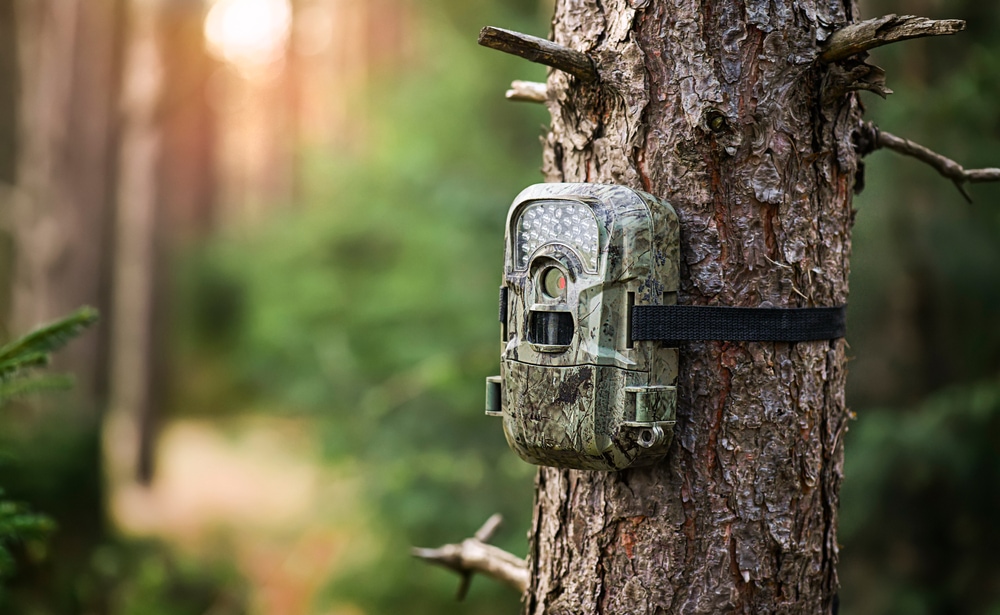
Not every trail camera has wireless capabilities, but it’s becoming more and more common. However, if you can manage to get one that is wireless, you link it to your phone. This will make getting the pictures and video easier if you have the camera in a higher place. It will also save you some space as well.
Just remember that they do have a range of about 500 feet, so if you have a bigger property this may not work for you.
Related Read: 10 Best Trail Cameras – Reviews & Top Picks

In Conclusion
All these tips came come in handy but you have to remember your house layout when setting up a trail camera for security. Every house is going to be different, and that means you have to find what works for you. Take a good look at your property and be sure to take notes regarding where you could place a trail camera. Once you have it down, you can find something that works for you. Plus, it will end up saving you thousands in the long run as you are in full control of the system.
Featured Image Credit: SERGEI PRIMAKOV, Shutterstock
About the Author Robert Sparks
Robert’s obsession with all things optical started early in life, when his optician father would bring home prototypes for Robert to play with. Nowadays, Robert is dedicated to helping others find the right optics for their needs. His hobbies include astronomy, astrophysics, and model building. Originally from Newark, NJ, he resides in Santa Fe, New Mexico, where the nighttime skies are filled with glittering stars.
Related Articles:
Can You Use Binoculars to Look At Stars? How to Choose the Right Pair
How to Clean a Refractor Telescope: Step-by-Step Guide
How to Clean a Telescope Eyepiece: Step-by-Step Guide
How to Clean a Rifle Scope: 8 Expert Tips
Monocular vs Telescope: Differences Explained (With Pictures)
What Is a Monocular Used For? 8 Common Functions
How to Clean a Telescope Mirror: 8 Expert Tips
Brightfield vs Phase Contrast Microscopy: The Differences Explained
